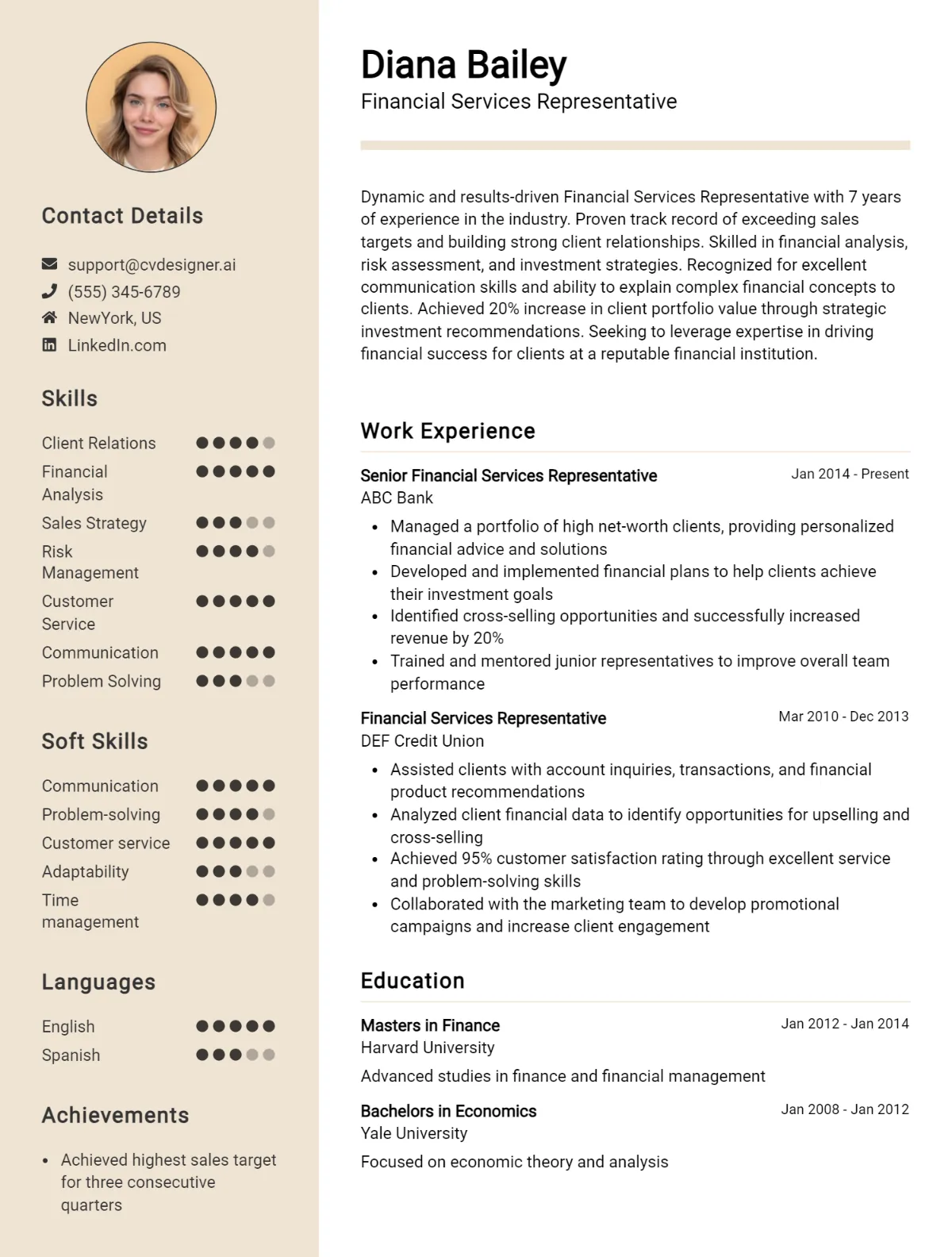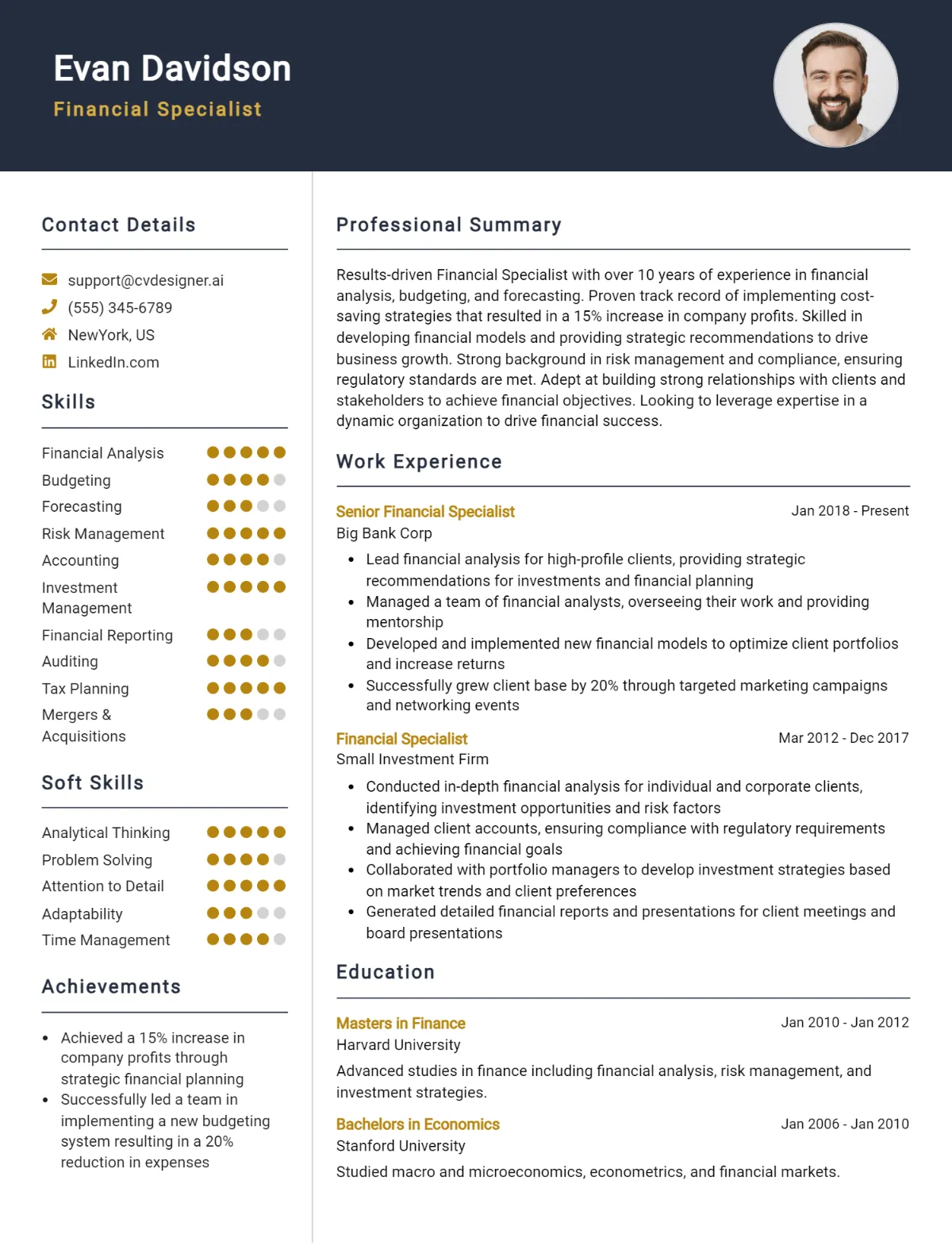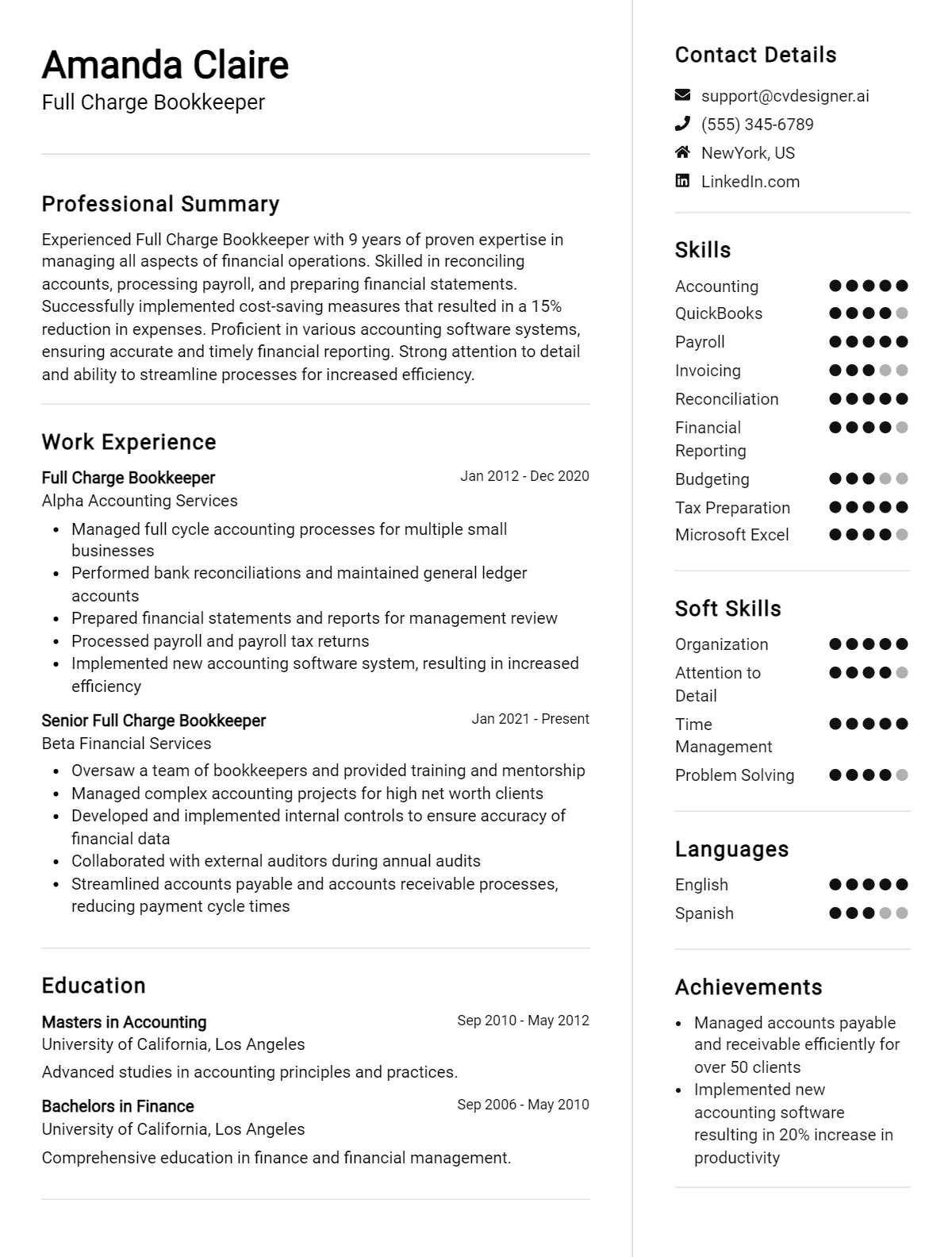Crafting the perfect resume is both an art and a science. It requires a delicate balance between showcasing your achievements and presenting them in a way that grabs a recruiter’s attention. However, even the most seasoned professionals can make mistakes that detract from the overall impact of their resumes. In this guide, we’ll explore 18 of the most common resume mistakes and, more importantly, how to avoid them. By addressing these pitfalls, you can ensure your resume stands out for all the right reasons.
1. Using a Generic Resume for Every Job Application
Problem: Why Using the Same Resume for Different Jobs is Ineffective
A one-size-fits-all approach to resume writing is one of the biggest mistakes you can make. Each job has unique requirements, and a generic resume may not highlight the specific skills and experiences that are most relevant to the role. Recruiters and Applicant Tracking Systems (ATS) are looking for tailored resumes that align closely with the job description. When your resume lacks specificity, it signals to employers that you haven’t taken the time to understand what they need. This lack of alignment can lead to your resume being quickly dismissed.
Solution: How to Tailor Your Resume to Match Each Job Description
To avoid this mistake, customize your resume for each job application. Start by carefully reading the job description to identify the key skills and qualifications the employer is seeking. Then, adjust your resume to emphasize those skills, using the same language and keywords found in the job posting. Tailoring your resume means reordering your bullet points to highlight the most relevant experience, adjusting your summary to reflect the job’s key requirements, and potentially omitting less relevant information that might distract from your qualifications.
Example:
Before Tailoring:
- “Managed projects and teams.”
After Tailoring:
- “Managed cross-functional teams and led Agile project management initiatives, resulting in a 15% increase in productivity.”
In this tailored example, the keywords “cross-functional teams,” “Agile project management,” and “productivity” align with what an employer might be seeking, thus making the resume more appealing and targeted.
Pro Tip: Use our resume builder to quickly and easily customize your resume for each job application, ensuring it resonates with the specific role you’re applying for.
2. Failing to Include Keywords
Problem: How Missing Relevant Keywords Can Prevent Your Resume from Passing Through ATS
Applicant Tracking Systems (ATS) are designed to filter resumes based on specific keywords related to the job. These systems are often the first hurdle your resume must clear before reaching a human recruiter. If your resume doesn’t include these keywords, it might never reach a human recruiter, regardless of your qualifications. This means that even highly qualified candidates can be overlooked if their resumes aren’t properly optimized for ATS.
Solution: Tips on Identifying and Integrating Keywords from Job Postings
To avoid being filtered out by ATS, incorporate relevant keywords from the job description into your resume. These keywords typically include specific skills, job titles, and industry-related terms that are crucial for the role. Focus on including these keywords in your skills section, experience bullet points, and summary. However, ensure that the keywords fit naturally within the context of your resume to avoid keyword stuffing, which can make your resume look unprofessional and unnatural.
Example:
Before:
- “Experienced in managing projects.”
After:
- “Experienced in managing Agile projects, with expertise in Scrum methodologies and cross-functional team leadership.”
This example includes specific keywords like “Agile projects,” “Scrum,” and “cross-functional team leadership,” which are likely to be recognized by ATS and ensure that your resume is passed on to a hiring manager.
Pro Tip: Review our resume examples to see how keywords are effectively integrated, making the resume both ATS-friendly and appealing to human readers.
3. Including Too Much Information
Problem: Overloading Your Resume with Unnecessary Details
While it’s important to provide enough information to showcase your qualifications, overloading your resume with too much detail can overwhelm recruiters. A cluttered resume makes it difficult for recruiters to quickly identify your key strengths and achievements. This is particularly problematic when recruiters only spend an average of 6-7 seconds initially scanning each resume. Too much information can dilute the impact of your most important experiences and make it harder for key details to stand out.
Solution: Strategies for Keeping Your Resume Concise and Focused
To keep your resume concise, focus on including only the most relevant experiences, skills, and achievements. Prioritize the most recent and impactful experiences, and remove outdated or irrelevant information that doesn’t add value to your application. Aim to keep your resume to one page, or two pages if you have extensive experience. Use bullet points to break up text and make it easier to scan. Additionally, consider summarizing less relevant roles to keep the focus on your most impressive accomplishments.
Example:
Before:
- A three-page resume that includes every job and responsibility since high school.
After:
- A focused, two-page resume that highlights the most recent and relevant experiences, using bullet points to present information clearly and concisely.
The after example is more likely to capture a recruiter’s attention and communicate your value quickly, without overwhelming them with unnecessary details.
Pro Tip: Use our cv builder to streamline your resume and focus on what matters most, ensuring your key qualifications stand out.
Use our Best Resume Templates
Discover our top-tier Resume templates, meticulously designed to make a lasting impression. Choose from a variety of professional layouts to enhance your career prospects.
4. Overusing Buzzwords and Clichés
Problem: How Buzzwords Like “Team Player” Can Weaken Your Resume
Buzzwords like “team player,” “hardworking,” and “go-getter” are often overused in resumes. While these terms may sound positive, they are vague and fail to provide concrete evidence of your skills or achievements. Overusing buzzwords can make your resume blend in with others, rather than stand out. These phrases are often seen as filler content that does not add value, and they can make it appear as though you lack specific, meaningful examples of your contributions.
Solution: Using Specific, Measurable Achievements Instead of Clichés
Instead of relying on clichés, focus on providing specific examples of your achievements. Use action verbs and quantify your successes to demonstrate your skills and impact. This approach is far more compelling than generic buzzwords and helps differentiate you from other candidates. For example, instead of saying you are a “team player,” describe how your teamwork led to a specific outcome, such as completing a project ahead of schedule or improving team productivity.
Example:
Before:
- “Hardworking team player who always goes the extra mile.”
After:
- “Collaborated with a team of 10 to develop a new marketing strategy, resulting in a 20% increase in lead generation.”
The after example provides a concrete example of teamwork and dedication, without relying on overused phrases. It also includes a measurable outcome, which makes the achievement more tangible and impactful.
Pro Tip: Explore our resume templates to find layouts that help you present your achievements clearly and effectively, avoiding the pitfalls of overused buzzwords.
5. Poor Formatting and Design
Problem: How Unprofessional Design Can Make Your Resume Hard to Read
A poorly formatted resume can be difficult to read and may leave a negative impression on recruiters. Common formatting issues include inconsistent fonts, cluttered layouts, and lack of white space. These design flaws can detract from the content of your resume, making it harder for recruiters to quickly assess your qualifications. Inconsistent formatting can also suggest a lack of attention to detail, which is a red flag for many employers.
Solution: Tips for Choosing a Clean, Professional Format and Layout
To ensure your resume is easy to read and professionally presented, choose a clean, simple format. Use a standard font like Arial, Calibri, or Times New Roman, and keep the font size between 10 and 12 points. Use consistent formatting throughout, including uniform bullet points, spacing, and margins. Ensure there’s plenty of white space to make your resume easy on the eyes. Avoid overly complex designs or graphics that might distract from the content. If you’re not confident in your design skills, consider using a professional resume template that has been pre-formatted for clarity and impact.
Example:
Before:
- A resume with multiple fonts, colors, and inconsistent spacing.
After:
- A streamlined resume with a single font, consistent spacing, and clear headings.
The after example is not only easier to read but also looks more professional, making a better impression on recruiters and increasing the chances that they will engage with your content.
Pro Tip: Check out our cv templates for clean, professionally designed layouts that enhance readability and presentation.
6. Typos and Grammatical Errors
Problem: The Negative Impact of Errors on Your Resume’s Credibility
Typos and grammatical errors are among the quickest ways to undermine the credibility of your resume. Such mistakes suggest a lack of attention to detail and can make you appear unprofessional or careless—qualities that are unlikely to impress a potential employer. Even a minor typo can cause a recruiter to question your communication skills and overall professionalism.
Solution: Techniques for Thorough Proofreading and Error Checking
To avoid typos and grammatical errors, take the time to thoroughly proofread your resume. Don’t rely solely on spell check; instead, read your resume out loud to catch awkward phrasing and errors that might be easy to overlook. Consider asking a trusted friend or colleague to review your resume with fresh eyes, as they may spot mistakes you missed. Taking breaks between proofreading sessions can also help you see your resume with a fresh perspective.
Example:
Before:
- A resume with a few minor typos and inconsistent punctuation, such as “Managed team’s in multiple departments.”
After:
- A meticulously proofread resume with no errors, consistent formatting, and clear, concise language: “Managed teams in multiple departments.”
The after example demonstrates professionalism and attention to detail, which are key qualities that employers seek in candidates.
Pro Tip: Use tools like Grammarly or Hemingway Editor to help catch mistakes you might overlook, ensuring your resume is polished and error-free.
7. Lack of Quantifiable Achievements
Problem: Focusing on Duties Rather Than Accomplishments
A common mistake on resumes is listing job duties rather than focusing on accomplishments. Simply stating what you were responsible for doesn’t provide the same impact as detailing what you achieved in that role. Employers are more interested in the results of your work than in the tasks you performed. Without quantifiable achievements, your resume may read as a list of responsibilities, which can fail to capture the attention of hiring managers.
Solution: How to Use Metrics to Showcase Your Achievements
To make your resume more compelling, shift your focus from duties to accomplishments by using metrics to quantify your achievements. Numbers provide context and scale, making your successes more tangible and impressive. For example, instead of saying you “managed a team,” you might say you “led a team of 10, increasing productivity by 15% over six months.” Quantifying your results helps to demonstrate the real impact you had in your previous roles.
Example:
Before:
- “Improved customer service.”
After:
- “Increased customer satisfaction scores by 20% within six months by implementing a new training program for front-line staff.”
The after example is far more impactful because it includes a specific, measurable outcome that clearly demonstrates the value you brought to the organization.
Pro Tip: Use our resume builder to easily add metrics to your achievements, helping you stand out to employers.
8. Using an Unprofessional Email Address
Problem: How an Unprofessional Email Can Hurt Your First Impression
Your contact information is one of the first things a recruiter will see on your resume, and an unprofessional email address can create a negative first impression. Email addresses that include nicknames, numbers, or playful phrases may be seen as unprofessional and could cause recruiters to question your seriousness about the job. In a competitive job market, you want every aspect of your resume to convey professionalism.
Solution: Choosing a Professional Email Format
To avoid this mistake, ensure that your email address is simple and professional. The best format is typically your first name and last name or a combination of your name and initials. If your preferred email address is unavailable, consider adding a middle initial or using a different domain. Avoid using numbers, underscores, or any non-standard characters that might look unprofessional.
Example:
Before:
- Email: funstar123@example.com
After:
- Email: john.doe@example.com
The after example is straightforward and professional, making a better impression on potential employers and ensuring that your contact information aligns with the overall professionalism of your resume.
Pro Tip: Make sure your LinkedIn profile and other contact details are up to date and consistent with your resume, reinforcing your professional brand.
9. Failing to Highlight Transferable Skills
Problem: Not Emphasizing Skills That Apply Across Different Roles
Transferable skills are those that can be applied in various roles and industries. They include abilities like communication, leadership, and problem-solving, which are crucial in almost any job. Failing to highlight these skills can be a missed opportunity, especially if you are transitioning to a new career or applying for a job in a different industry. Recruiters are often looking for candidates who can bring valuable, transferable skills to their organization, regardless of their specific job history.
Solution: How to Identify and Feature Transferable Skills
To effectively highlight transferable skills, first identify the core competencies that have been essential to your success in previous roles. These might include skills like project management, teamwork, data analysis, or customer service. Next, weave these skills into your resume by providing specific examples of how you’ve applied them in different contexts. Emphasize how these skills will benefit the potential employer, especially if you’re moving into a new field.
Example:
Before:
- Listing only job-specific skills without considering broader applications.
After:
- Highlighting transferable skills such as “Leadership,” “Project Management,” and “Critical Thinking,” with examples of how they were applied in different contexts.
By focusing on transferable skills, you can appeal to a wider range of employers, demonstrating your versatility and adaptability.
Pro Tip: Check out our cv builder to create a resume that highlights your most valuable transferable skills, helping you stand out in any industry.
10. Ignoring the Job Description
Problem: How Not Aligning Your Resume with the Job Description Can Cost You
One of the most common resume mistakes is failing to align your resume with the job description. Employers create job descriptions to outline the specific skills, qualifications, and experiences they are looking for in a candidate. If your resume doesn’t reflect these requirements, you are unlikely to make it past the initial screening. Ignoring the job description can result in your resume appearing generic or irrelevant, even if you have the right qualifications.
Solution: Customizing Your Resume to Match the Job’s Requirements
To avoid this mistake, thoroughly review the job description and identify the key skills, experiences, and qualifications the employer is seeking. Then, customize your resume to highlight these elements, ensuring that your experience aligns with the job’s requirements. This might involve reordering bullet points, adding specific keywords, or emphasizing particular achievements that are relevant to the job. The goal is to make it as easy as possible for the recruiter to see that you are a strong match for the role.
Example:
Before:
- A generic resume that lists all of your experience without prioritizing what’s most relevant to the job.
After:
- A tailored resume that emphasizes the skills and experiences most closely aligned with the job description, using language that mirrors the job posting.
This approach increases your chances of getting noticed and demonstrates that you’ve put thought and effort into your application.
Pro Tip: Explore our resume templates to find a layout that allows you to easily customize your resume for each job.
11. Listing Responsibilities Instead of Achievements
Problem: Why Listing Only Responsibilities Can Make Your Resume Bland
A resume that focuses solely on job responsibilities rather than achievements can come across as bland and unremarkable. Responsibilities tell the recruiter what you were supposed to do, but achievements tell them what you actually accomplished. Without highlighting your achievements, your resume may fail to differentiate you from other candidates who had similar job roles.
Solution: Turning Responsibilities into Achievements with Specific Examples
To make your resume more dynamic and impactful, convert job responsibilities into achievements. Instead of simply listing what you were responsible for, describe what you achieved in that role. Use specific examples and metrics to quantify your success. This not only makes your resume more engaging but also provides concrete evidence of your value as an employee.
Example:
Before:
- “Responsible for managing a sales team.”
After:
- “Led a sales team of 12, increasing quarterly revenue by 25% through targeted sales strategies.”
The after example highlights an achievement rather than just a responsibility, making your contributions clear and compelling.
Pro Tip: Review our resume examples to see how others have successfully turned responsibilities into achievements.
12. Leaving Out a Summary or Objective
Problem: How Missing a Summary or Objective Can Leave Your Resume Unfocused
A resume that lacks a summary or objective can feel unfocused and leave the recruiter guessing about your career goals or the value you bring. The summary or objective serves as an introduction, providing a snapshot of your professional background, key skills, and what you’re seeking in your next role. Without it, your resume may lack direction and fail to grab the recruiter’s attention.
Solution: Crafting a Strong, Targeted Summary or Objective Statement
To avoid this mistake, include a well-crafted summary or objective at the top of your resume. The summary should highlight your most important qualifications and align with the job you’re applying for. If you’re early in your career or making a career change, an objective can help clarify your goals and how they connect to the role. Keep it concise, compelling, and tailored to the specific job.
Example:
Before:
- A resume that jumps straight into work experience without a clear introduction.
After:
- A targeted summary: “Experienced marketing professional with over 8 years of expertise in digital strategy and content creation, seeking to leverage proven skills in SEO and social media to drive brand growth at [Company Name].”
The after example provides a focused introduction that sets the stage for the rest of the resume, making it easier for the recruiter to understand your fit for the role.
Pro Tip: Browse our cover letter templates for inspiration on crafting a summary or objective that complements your resume.
13. Inconsistent Formatting
Problem: How Inconsistent Fonts, Spacing, and Layout Can Confuse Recruiters
Inconsistent formatting can make your resume look unprofessional and difficult to read. Common issues include using different fonts, varying text sizes, inconsistent spacing, and misaligned bullet points. These inconsistencies can distract from the content of your resume and create a disjointed appearance that may confuse or frustrate recruiters.
Solution: Ensuring Consistency Throughout Your Resume
To avoid formatting inconsistencies, choose a single font and stick to it throughout your resume.
Ensure that all headings, bullet points, and text align properly, and maintain consistent spacing between sections. Use bold and italics sparingly and consistently—only to emphasize key information. Before submitting your resume, review it carefully to ensure that all elements are uniform and that the layout flows logically.
Example:
Before:
- A resume with headings in different fonts and inconsistent bullet point styles.
After:
- A resume with uniform headings, consistent bullet points, and well-aligned sections, creating a polished and cohesive appearance.
The after example demonstrates professionalism and attention to detail, which are critical qualities that employers seek in candidates.
Pro Tip: Use our resume builder to ensure that your formatting is consistent and professional, giving your resume a polished look.
14. Using Passive Language
Problem: How Passive Language Weakens Your Impact
Using passive language on your resume can make your accomplishments seem less impressive and your role in them less clear. Passive sentences often focus more on what was done rather than on who did it. This can diminish the impact of your achievements and make it harder for recruiters to see your contributions. In contrast, active language puts you at the center of your achievements, making your resume more dynamic and engaging.
Solution: Using Action Verbs to Create a Dynamic and Engaging Resume
To make your resume more impactful, use strong action verbs that clearly convey your role in achieving results. Replace passive phrases like “was responsible for” with active verbs like “led,” “developed,” “implemented,” and “achieved.” This shift not only makes your resume more engaging but also emphasizes your proactive contributions.
Example:
Before:
- “Was responsible for the development of new marketing strategies.”
After:
- “Developed and implemented new marketing strategies, increasing customer engagement by 30%.”
The after example is more powerful because it uses active verbs and quantifies the result, making your achievements stand out.
Pro Tip: For more examples of action-oriented language, browse our resume examples.
15. Not Tailoring Your Resume for ATS
Problem: How Failing to Optimize for ATS Can Result in Your Resume Being Overlooked
Many companies use Applicant Tracking Systems (ATS) to filter resumes before they reach human recruiters. If your resume isn’t optimized for ATS, it may never be seen by a human, regardless of how qualified you are. Common mistakes include using complex layouts, non-standard fonts, and failing to include relevant keywords from the job description. These issues can prevent the ATS from properly scanning and categorizing your resume, leading to it being overlooked.
Solution: Tips for Making Your Resume ATS-Friendly
To optimize your resume for ATS, use a simple, text-based layout with standard fonts like Arial, Calibri, or Times New Roman. Avoid using images, graphics, or unusual formatting elements that might confuse the system. Be sure to include relevant keywords from the job description, especially in your skills section and experience bullet points. Additionally, use clear headings and avoid abbreviations that the ATS might not recognize.
Example:
Before:
- A visually complex resume with graphics and non-standard fonts that could confuse ATS.
After:
- A simplified, text-based resume with relevant keywords and a standard format, ensuring compatibility with ATS.
The after example is more likely to pass through ATS and reach a human recruiter, increasing your chances of being considered for the job.
Pro Tip: Use our resume builder to create an ATS-friendly resume that still looks great and effectively showcases your qualifications.
16. Leaving Employment Gaps Unexplained
Problem: How Unexplained Gaps Can Raise Red Flags
Employment gaps on a resume can be a red flag for recruiters, especially if they are not explained. Unexplained gaps may lead to assumptions about why you were not working, which can hurt your chances of being considered for the role. While employment gaps are common, especially in today’s job market, it’s important to address them in a way that reassures potential employers.
Solution: How to Address Employment Gaps on Your Resume
To address employment gaps, be honest and provide a brief explanation in your resume or cover letter. If you took time off for personal reasons, further education, or to care for a family member, include this information in a positive light. Highlight any productive activities you engaged in during the gap, such as freelance work, volunteer work, or skill development. This approach helps to mitigate concerns and demonstrates that you remained proactive and engaged, even during periods of unemployment.
Example:
Before:
- A resume with an unexplained 18-month gap between jobs.
After:
- “Career Break (2019-2021): Took time off to pursue further education in digital marketing and completed a certification in Google Analytics. Also volunteered as a digital marketing consultant for a non-profit organization.”
The after example addresses the gap directly and positively, showcasing how you used the time to enhance your skills and contribute to your community.
Pro Tip: If your employment gap was due to personal reasons, consider using our cover letter builder to provide a brief, respectful explanation, focusing on the positives and what you bring to the table now.
17. Including Irrelevant or Outdated Information
Problem: How Irrelevant or Outdated Details Can Clutter Your Resume
Including irrelevant or outdated information can clutter your resume and distract from your key qualifications. Details such as high school education (if you have a college degree), outdated technical skills, or jobs from more than 15 years ago can make your resume appear unfocused and may cause recruiters to overlook your more relevant experience. A cluttered resume can also suggest that you haven’t taken the time to update your document, which might imply a lack of attention to detail or awareness of what’s important in your career.
Solution: Removing Old or Irrelevant Content to Keep Your Resume Fresh and Relevant
To keep your resume focused and relevant, remove any outdated or irrelevant information that doesn’t contribute to your current career goals. Focus on the most recent and impactful experiences, skills, and achievements that are directly relevant to the job you’re applying for. If you have a long work history, consider summarizing or omitting older roles that are no longer relevant to your career trajectory. This will help to streamline your resume and ensure that the most important information stands out.
Example:
Before:
- Including a section on high school education and a job from 20 years ago that is unrelated to the current role.
After:
- Focusing on recent experience and skills, while summarizing older roles and removing irrelevant information.
The after example presents a more focused and relevant resume, increasing the chances that recruiters will quickly identify your key qualifications.
Pro Tip: Regularly update your resume to ensure it reflects your current career stage and goals, using our cv builder to streamline the process.
18. Forgetting to Update Your Resume Regularly
Problem: How an Outdated Resume Can Hurt Your Chances
An outdated resume can hurt your chances of landing a job, especially if it doesn’t reflect your most recent experiences, skills, or career achievements. If you haven’t updated your resume in a while, you might be missing out on highlighting new skills or accomplishments that could make you a more competitive candidate. An outdated resume can also suggest that you’re not actively engaged in your career or that you haven’t kept up with the latest trends in your field.
Solution: Tips for Keeping Your Resume Current and Ready for New Opportunities
To avoid this mistake, make it a habit to update your resume regularly, even when you’re not actively job hunting. Review your resume every few months to add any new responsibilities, achievements, or skills, and to remove any outdated or irrelevant information. Keeping your resume up to date ensures that you’re always ready to apply for new opportunities and that your resume reflects your most current and relevant qualifications.
Example:
Before:
- A resume that hasn’t been updated in two years, missing recent job roles and skills.
After:
- A regularly updated resume that includes the latest roles, achievements, and training, keeping the content fresh and relevant.
The after example reflects a proactive approach to career management and ensures that you’re always ready to seize new opportunities.
Pro Tip: Use our resume builder to keep your resume up to date with minimal effort, ensuring you’re always prepared for the next step in your career.
Conclusion
Your resume is more than just a list of your work history—it’s a marketing tool that showcases your skills, achievements, and potential. By avoiding these 18 common resume mistakes, you can create a resume that not only passes through Applicant Tracking Systems but also impresses hiring managers and helps you land the job you want. Remember to tailor your resume to each job, focus on quantifiable achievements, and keep your content concise and relevant. With a well-crafted resume, you’ll be well on your way to achieving your career goals.
Start crafting your standout resume today using our resume builder and resume templates to ensure you present yourself in the best possible light.








